Matador Network's Blog, page 2323
February 5, 2014
10 beguiling Konglish terms

Photo: Philippe Teuwen
South Korea is one of those places where the English language has been adopted in a hectic, freewheeling manner, so that over the years a unique regional brand of English has become fixed in usage. This idiosyncratic patois is known as “Konglish.” In Seoul, Busan, and the other major cities, English is understood (but not spoken) by most, while Konglish is used by all.
Some words — like “driver” for “screwdriver,” “self” for “self-serve,” and “service” (meaning anything “on the house”) — can be figured out on the first encounter. Other words in Konglish manage to outmaneuver our semantic radar, leading to embarrassing or unfortunate situations. Here are 10 you’re likely to come across in South Korea:
1. On a first meeting, you’ll be asked for your name card. This is not a piece of ID, a travel document, or some sort of name tag. It’s simply your business card.
2. It’s best not to mix work and romance, but a foreigner unfamiliar with the Konglish term meeting may end up doing just that. While meetings in the Western context usually involve stuffy conference rooms, in South Korea a meeting is a blind date arranged by a friend.
3. Around exam time every year in high schools and universities across the country, one can hear students shouting the word Fighting! Who is being fought? What is being fought for? This is not in fact the starting signal for a battle royale. Rather, it’s an expression of strong encouragement, like “You can do it!”
4. A case of the whole being mistaken for the part, the word schedule in Konglish is used to refer to an appointment. When someone says, “I have a schedule,” it’s not a non sequitur but a way of saying, “I have something else going on at that time and won’t be able to make it.”
5. Some things don’t always become more comprehensible after you’ve learned to read Hangul, the Korean script. For instance, one may notice the word “health” or “fitness” enigmatically covering the side of a building and wonder just what sort of existential statement is being hinted at. Such a misunderstanding stems from the Korean knack for concision — dropping word endings for convenience. Thus, a health is a health club and a fitness is a fitness center, just as in South Korea a department is a department store.
6. The first time I visited a dry cleaning shop in Seoul, I was shocked and offended to hear the woman tallying up my laundry items refer to my boxer shorts as panties. Indeed, the terms “boxers” and “briefs” appear to be unknown here. There are only “men’s panties” (namja panty) and “women’s panties” (yeoja panty).
7. While South Koreans most often drop the second part of a compound word, as we’ve seen above, it can happen at the beginning as well. Such is the case with event. In Western English almost anything can be an “event”: a wedding, a rocket launch, a concert, or a promotional sale. In South Korea an “event” is only the last of these occasions — a “special event” or a limited-time-only sale. These are also known domestically as poktan (or “bomb”) sales.
8. A word of the younger generation that seems weird at first but less so with time and familiarity is the slang term skinship. A meeting of the words “skin” and “friendship,” “skinship” is any sort of physical contact between a romantic couple. Usually involving touching or caressing, “skinship” can be cause for complaint if it takes place in a movie theater or some other public space. The word certainly rolls off the tongue a lot easier that “public display of affection” and is more evocative than “PDA.”
9. The all-engaging pursuit of most university juniors and seniors in this age of competition is to up their specs. For me that means pushing up my glasses — or “spectacles” — when they slide down the bridge of my nose. Somehow, in South Korea the word “specifications” was at one time mistaken for the word “qualifications” and then shortened to “specs.” In order to improve their specs, young adults here cram for TOEIC and TOEFL tests, serve in internships, acquire certificates for computer skills, and go to various other measures to gain a tiny but crucial edge over the competition.
10. Some Konglish terms seem to be here to stay. At one time, I took up the personal crusade of explaining the standard English meaning of the word hip whenever I heard the Konglish version, a substitution for the word “butt,” “bum,” “posterior,” “rear end,” etc. However, after attempting to “correct” a medical professional who told me he’d be giving me an injection in my “hip” and receiving the sort of kindly, tolerant glance usually reserved for half-wits, I gave up on my mission. And so I got a shot in my hip. [image error]

A road trip through Namibia [pics]
MY FAVORITE travel conference of the year two years running has been the ATTA’s Adventure Travel World Summit. Last year it was hosted in Namibia, and Matador was invited to come down and be part of the “storytelling team.” The ATTA team puts together dozens of “pre-summit adventures” for conference attendees, and they were kind enough to let us design our own.
Basically, we wanted to do a 1300km road trip that would take us through a large and diverse portion of this massive country — all “self drive,” no guides. Just us, our truck, and the open road. It was fucking epic.
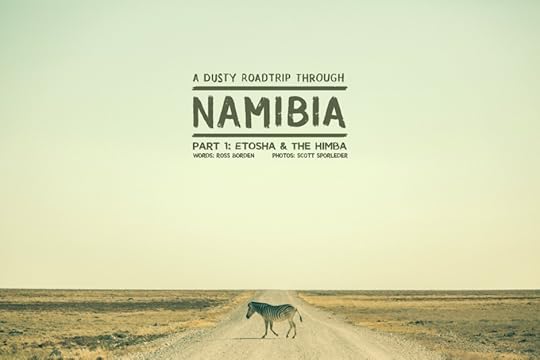
1
Welcome to Namibia
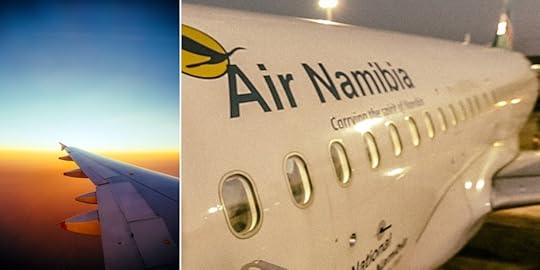
2
The arrival
When we flew in from Cape Town we had no idea what to expect. Looking west out the window of the plane as we approached Windhoek, the sunset drowned out a faint image of a river through endless desert. The anticipation of what lay ahead was palpable for both me and Matador Creative Director Scott Sporleder.
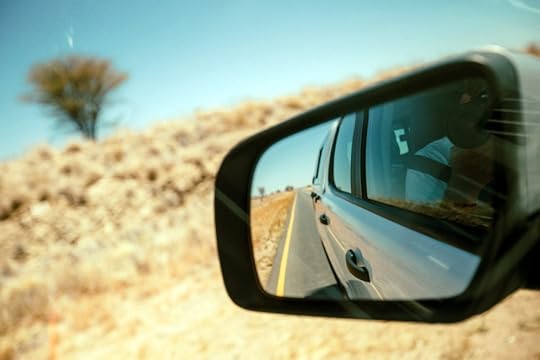
3
Logistics
When we arrived in the capital we were greeted by David and the outstanding team at ATI Holidays, who planned the itinerary for our trip. Driving unguided through Africa might sound a little more adventurous than most people are up for, but I assure you of three things: (1) Self drive is, without question, the best way to see Namibia, (2) The quality of the vehicles, equipment, and logistics at ATI will put your mind at ease regarding just about anything that could potentially go wrong, and (3) You begin to notice pretty quickly that Namibia is as safe as it gets in Africa and the roads are shockingly reliable.
Intermission
[image error]
The ultimate road trip through tropical North Queensland [pics]
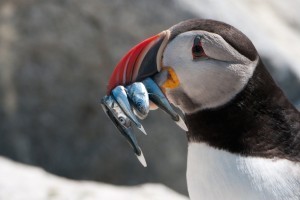
Photo essay: Wildlife and culture on Grand Manan Island
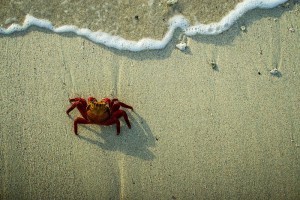
Aquatic wildlife of the Galápagos [PICs]
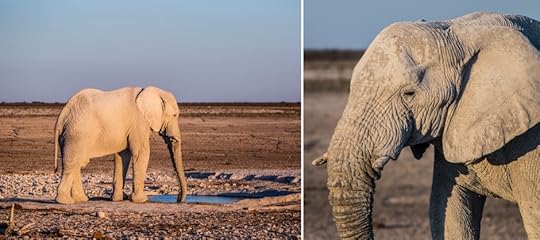
4
Arrival in Etosha
After leaving Windhoek, our journey began in Etosha National Park, probably Namibia’s best-known park for spotting wildlife. Etosha has all of ‘the Big Five,’ and we were instantly excited by the prospect of doing our first self drive safari around big, wild game.
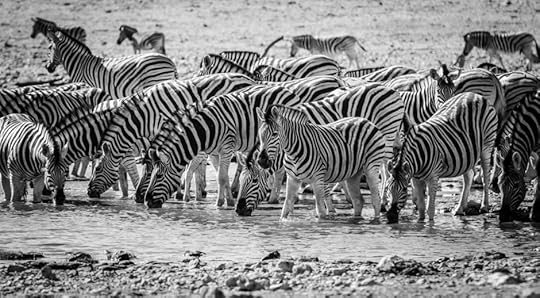
5
Two worlds separated by the seasons
Etosha is a massive expanse of land situated around a huge lake in the rainy season, which becomes an even bigger dry pan when the rains cease. We were there in the dry season, and it was easy to find wildlife by focusing on the water holes that had yet to dry up. Although seeking out the game might be more difficult when everything is green and water is plentiful, I’m already excited to go back to Etosha during the rainy season, when hundreds of elephants will be hanging out in the lake.
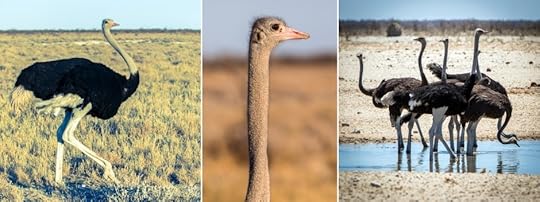
6
Birds with personality
You’ll see an unusually large number of ostriches in Etosha. From shooting video of them running parallel to our truck at 40mph to watching their hilarious methods of drinking water, we had a blast shooting these goofy yet fascinating creatures.
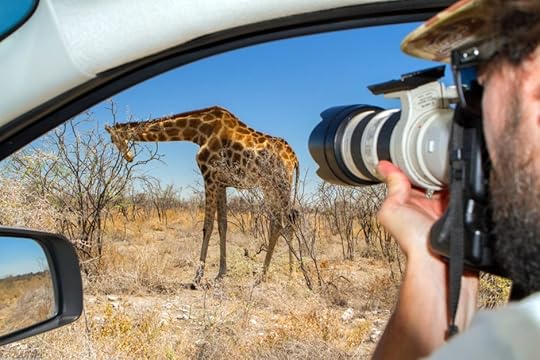
7
No need to break the rules
In Etosha, like practically all self drive parks in Africa, you are expected to stay on the designated roads, but this won’t stop you from getting up close and personal with Namibia’s most spectacular wildlife.

8
Where rhinos thrive
Namibia is the only country in Africa where wild rhino populations are actually increasing. Just why this is happening is a topic of intense debate, but in Etosha the rhino is neither rare nor shy and always very well protected.
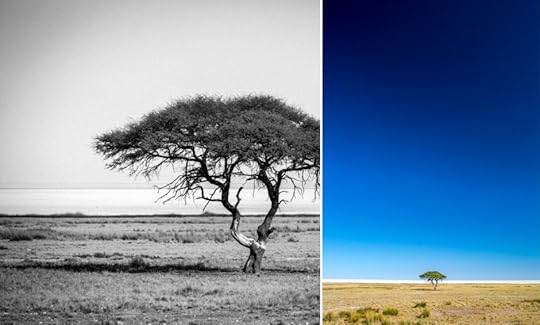
9
Spectacular landscapes
Like much of Namibia, the landscapes in Etosha are enough to stop and take a minute with, even when animals aren’t around.
Intermission
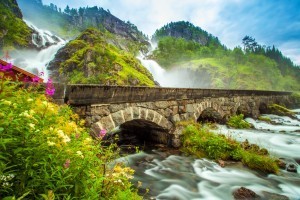
Fjord Norway was made for road trips [pics]
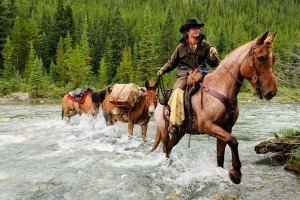
How I joined a wolf pack in Banff National Park, Alberta
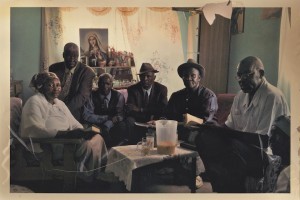
47°C: Life in the Kalahari [pics]
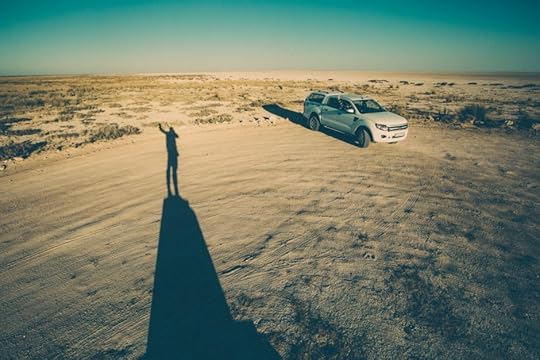
10
Spectacular landscapes
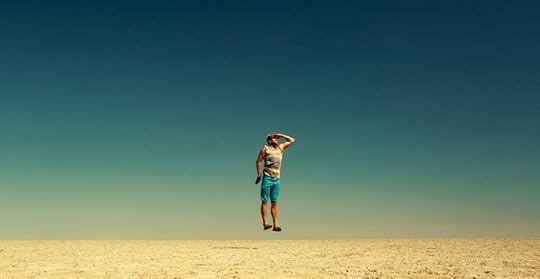
11
Spectacular landscapes

12
You herd me
On our second day in the park, we came upon a massive herd of zebra. At least 2,500 of them made their way across the road we were on and slowly but decisively overran one of the park's largest watering holes until it was consumed by the cloud of them.
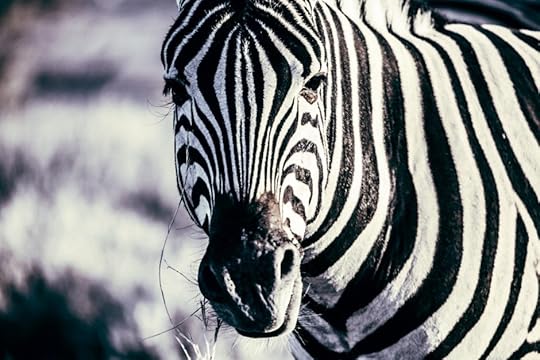
13
The zebra
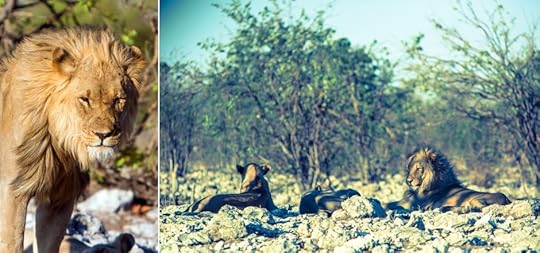
14
Lazy days
To conserve energy, lions are most active at night when they go out to hunt. During the day they typically sleep 20 out of every 24 hours.
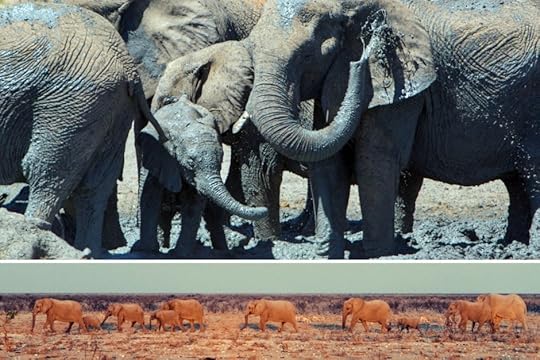
15
Family formations
The elephant population was impressive in Etosha. It was a treat to see them lathering each other in mud for some natural sunblock and traveling across the country in big lines as the sun set.
Intermission
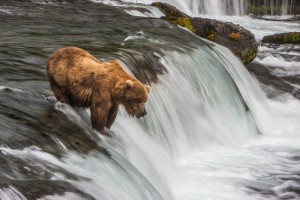
Coastal Brown Bears of Katmai National Park, Alaska [pics]
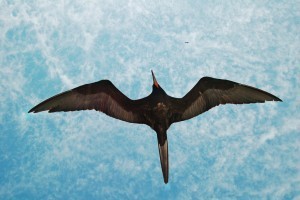
This is what you can look forward to on a trip to the Galápagos [pics]
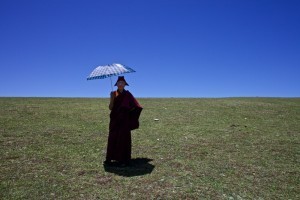
Life on the Tibetan border [pics]
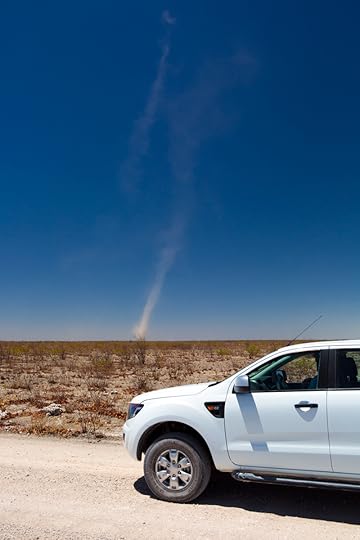
16
Dust devils
Because of the dry land and heat, we saw tons of huge dust devils on the long stretches of our trip through Etosha. Some of them didn’t look like much from far away but were almost the size of a small tornado as they tore across the road in front of us.
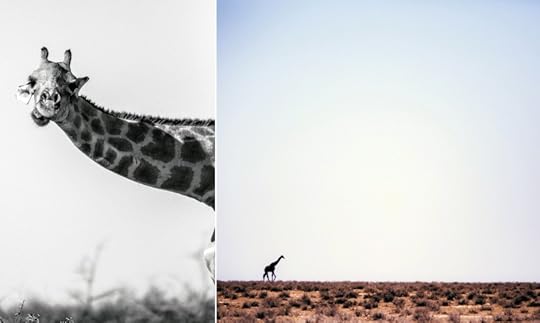
17
Leaving Etosha
After a couple quick but very fruitful days of game drives, we headed north towards a remote park exit across big open country and saw no one for hours.
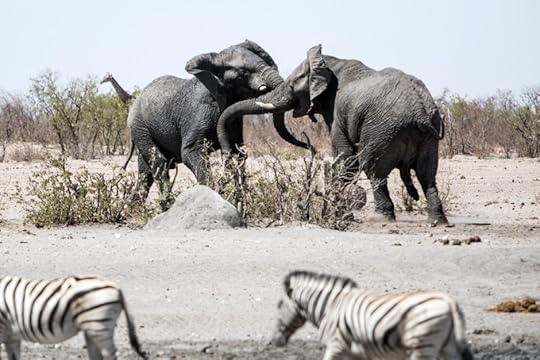
18
Family feuds
At one of the final watering holes we passed on that remote road, we came upon a large herd of elephants bathing in the mud and splashing in the water. There was some pretty intense sparring between two bulls from the herd.
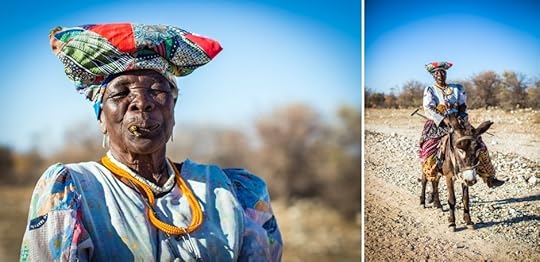
19
(Adapted) style for days
From Etosha we drove north towards the border with Angola, and the style of people’s dress began to change. Apparently when Namibia’s German colonizers arrived the indigenous people borrowed elements of their style of dress, and the result is unique and colorful. There’s no way the Germans looked this cool.
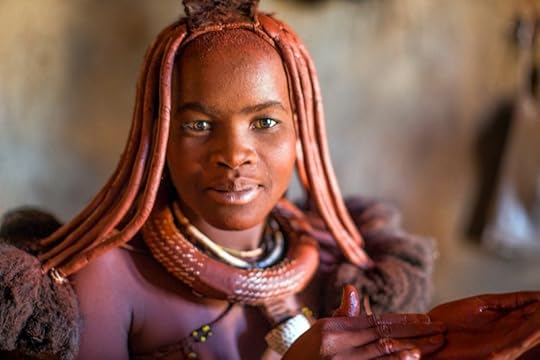
20
The Himba
After a few more hours of driving we arrived in Opuwo, which is one of the areas most densely populated with the indigenous Himba people who still practice their beautiful way of life in small villages around the arid mountains.

21
A warm welcome
We brought some jugs of water, sugar, and other goods that the village valued, and they invited us in to check out their village, huts, food storage, and livestock. In a month or so, they would pack up and continue to the next location in search of better grazing for their animals.
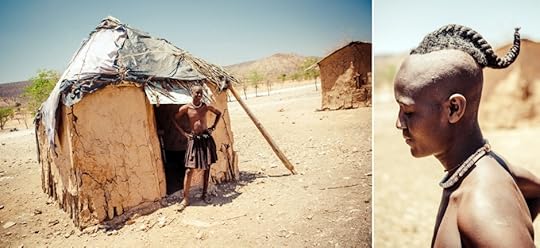
22
Bachelor pad
This young warrior, who figured he was about 14, spoke a little English and the rest we managed through hand gestures.

23
Himba portraits

24
A different kind of lotion
In place of regular bathing, the Himba (women in particular) spread a daily layer of mud on themselves. This is a mixture of clay, cow dung, and crushed plants and roots. Despite the fragrance, you can imagine it does feel good on the skin.

25
Himba child

26
Hanging out

27
Not so shy
Despite the lack of contact with most modern technologies we take for granted, the kids weren’t shy in front of the cameras and got a kick out of seeing themselves on the LCD screens after each photo.

28
Exotic crossings
After our visit with the Himba, it was back on the road towards Damaraland. Stay tuned for Part II!


How to properly use paper towels
AS RIDICULOUS as this may seem, I think it’s making an impact on the crazy amounts of paper towels we use on a daily basis. At least whenever I use a public toilet this pops into my head when I’m washing my hands. And then I take one — exactly one — paper towel to dry off. Shake and fold everybody! 

My vacations as a kid were pointless

Photo: Linh Nguyen
I told my mom she was selfish to take me on all those vacations when I was young. I said that if I have kids, I won’t take them out of the country until they’re 10 or so. Besides being a terrible daughter, I actually have really good reasons for my assertions.
All of that traveling was for her, not me.
I asked my mom why she took my brother and me to Universal Studios when I was two and he was practically still a fetus.
“I just loved seeing you guys happy,” she said. She’s a sweetheart. However, I also think that having us on vacations with her made her experience richer. Parents traveling with kids tend to interact with more people and see the places they visit through child-like eyes — with a fun and fresh perspective.
Traveling with children and seeing their reactions to new sights, smells, and sounds is a truly enriching experience — and a great opportunity for memorable photos, because that’s all the kids will ever know about those experiences.
I don’t remember any of those trips we took.
I went to Jamaica a couple times as a toddler. I rode a donkey, swam in the ocean, explored the limestone caves in Negril. Before you start saying how amazing that is and how jealous you are — stop. I’m actually a little resentful about the whole thing.
I only know that I did those things because of the photos my parents took. Besides that, it frustrates me that I was present for things as a child — like meeting Mickey Mouse and climbing Dunn’s River Falls — that I haven’t had the opportunity to do as an adult.
What I do remember, I was way too young to appreciate.
We did a road trip from Canada through the US all the way to Florida, stopping in cities like New York and Atlanta to go up the Empire State Building and visit Civil Rights monuments, and all I wanted to do was watch movies in the van so we could get to Disney World faster.
I couldn’t grasp the historical and cultural significance of what I was seeing, and so despite the good intentions, to me, it felt like a waste of time.
It was completely over-indulgent.
It’s pretty indulgent to take children to expensive places and faraway lands just so they can have fun. My brother and I went to Disney World when we were quite young, and literally all we wanted to do was play in our hotel swimming pool.
When I told my partner I stayed in all-inclusive resorts as a kid, he was completely taken aback. He told me that on vacation, he and his brothers would play a game called Pooh Sticks, and it’s one of his fondest memories of traveling as a kid. They didn’t go far, but he had fun playing a simple game that involved throwing sticks over a bridge. I laughed and thought, what a silly game, but after some consideration I realized his story speaks to the fact that vacations don’t have to be elaborate to be memorable.
Before you criticize me for being a spoiled and privileged brat, you should know that isn’t the case. I recognize I was very lucky, but I also know my mom sacrificed a lot of things so my brother and I could travel and be happy. In fact, she agreed with me on some of these points — especially that it may have been better to wait until we were older for some of the big trips.
* * *
And yet, after giving it some more thought, I’m willing to make some concessions. I got a lot out of these vacations as well.
I grew up to be very globally minded, with an interest in travel, culture, and language.
Thanks to travel, I became viscerally — rather than conceptually — aware of different cultures and the global experience. I had family around the world and I grew up knowing about doing things differently than others.
From birth, children are building neural connections in their brains. The more new and different experiences a child has, the more complex the connections, in turn making them more curious, intelligent, and adaptable than those with a predictable routine. I think if it weren’t for the travel, I literally wouldn’t be the person I am today.
I nurtured my wanderlust through studying language and culture while growing up — something I continue to do via slow travel and living abroad. Thinking about the people I know who didn’t have the opportunities to travel abroad quite so young, many don’t really see the point in spending time in foreign countries beyond getting away from the cold Canadian winter.
I learned that any travel will do.
We didn’t always take long trips, but my brother and I did get to do a lot of new things with our parents and different family members. Though it may not have been a new country or continent, it was still travel because we were changing our routine and exploring something new. Some of my fondest memories are of birthday parties some place I’d never been before, going ice skating and swimming.
Travel is about challenging your perspective and exploring, and you don’t need to take a kid across a country to do that. It can start in your own backyard by helping them see something in a way they hadn’t before, looking for the extraordinary in the ordinary. Because that’s what travel feels like: seeing the remarkable in something that’s everyday to other people. [image error]

7 moments in the Slovakian mountains

Photo: Chad Routh
In the spring of 2013, a friend and I decided to hike the ridge of the Low Tatras, a central Slovakian mountain range. Slovakia is not the end of the world — it lacks the vastness of Siberia or the grandiose vistas of Yosemite. Nor is it a particularly popular tourist destination. What’s worthwhile about Slovakia is not always visible at first sight. Here are some snapshots from a few days in the mountains of Central Europe.
I.
We’re not really off to a great start here. It’s 2am in my town of Brno, Czech Republic, and a train from Berlin that was supposed to be here an hour ago won’t arrive for another two. I’m bemoaning this failure of the famous German punctuality and sitting on the floor of a somewhat grimy waiting room. The other passengers are drinking, sleeping, grumbling.
I while away the time in memory — I think back to the last time I went east by train, ten years ago. We were also going to the Tatras then, but I remember the train ride as much as the mountains — Soviet-era sleeping cars with triple bunkbeds, an abundance of brown, and signs in every global language except English. One of my fondest childhood memories is of lying in the middle bunk at midnight, listening to the clanging of trains decoupling in a trainyard near the border. I’m excited to be heading east again.
II.
A few hours later, the train’s crossing the Slovak-Czech border — not the most dramatic of frontiers. For the duration of Czechoslovakia it didn’t exist, and now the European Union has rendered borders unimportant, so there’s no fanfare as we shift from Czech Republic to Slovakia. There’s not even a sign, and on both sides the landscape’s the same — green rolling hills separated by woods. The way you can mark the transition is by the linguistics of railway station signs.
III.
We’re in Poprad, where most trips to the Tatras start from. The ubiquitous, functionalist panel housing — rows upon rows of cement slabs with regularly spaced windows — stands in sharp contrast to the mountains that rise above it. The train station is dust and peeling paint, and you can sometimes see remnants of a former regime that haven’t been torn down yet — old statues and stars.
IV.

Photo: Stig Nygaard
A local bus takes us to the last village under the ridge. A local man draws us three lines on a piece of paper — a map to find the way up to the hills. We put on backpacks and walk on a dirt path past the graveyard, past the potato cellars in the side of the hill, past sheep, through rolling meadows. This is the Slovakia I remember. The seven hours pass as though in reverie, and then, just as the sun is setting, we make the ridge, and the little shelter on top of it. You can stay inside for free, with the understanding that you’re respectful of your surroundings.
We sit on the field in the orange light, and I remember a poem from my childhood, about white birds and mountaintops where the bad things of the everyday couldn’t reach. It’s hard to describe moments like that one — on a mountain ridge at sunset — without falling into hopeless cliché, but I’ve got that moment hidden away somewhere.
V.
The morning dawns cold and clear, and we’re happy to be alive in our little mountain hut. Hiking on, we get to the mountain pass just after noon and stop for lunch. Halušky are the national meal of Slovaks: small potato dumplings covered in sheep cheese and bacon, sometimes sauerkraut. It’s the type of meal you eat if your days involve herding sheep over mountain ridges for twelve hours a day — otherwise it’s hopelessly filling. It sticks to your ribs and doesn’t let go. Joanna’s a Canadian vegetarian who’s been living in the Czech Republic for a year, and she’s a bit overwhelmed by everyone’s meat and dairy tendencies in Central Europe. I’m Czech, born and raised in a carnivorous family. I am absolutely unperturbed.
“They eat so unhealthily! They could just be vegetarian!”
I shrug my shoulders and dig into my steaming plate of bacon and sheep cheese. I too am a once-and-future vegetarian, but today holds bacon and cheese, and in this time and in this place, it makes perfect sense.
VI.
The weather in the mountains is often like a weathervane spinning out of control. We got to the mountain in blazing sunlight, and we leave to climb back up the ridge in pouring frigid rain. We pass the time by coming up with life rules: “Don’t complain unless it’s funny” is a good one, immediately applicable. “Ask for consent” and “Pay your library fines” come up as well, less available for immediate use.
When we get right below the ridge, a thunderstorm hits, along with hail. We cower in the shrubs, drenched to the bone, as bolts of lightning ricochet off the hills around us.
VII.

Photo: David Meggers
What feels like hours later but is likely only 15 minutes, the lightning stops, and we make it to a refuge I’d been excited to get to all along — Stefanikova chata, a mountain hut at 1,740 meters with hot water and functioning kitchen. Everything that’s in the house has been carried up from the valley on foot. A placard on the wall in the hall proclaims that Igor Fabricius, the current caretaker of the hut, has carried up 173,291kg of supplies and material over his 20 years on the job.
It’s still raining outside, and we strip off our dirty, soaking clothes, put on dry wool, leave our packs in the dormitory, and head to the communal dining room for borovička (alcohol made from juniper berries) and dumplings. There is a giant fluffy dog in the dining room, a multitude of flannel-clad men, and a staggeringly beautiful cook in the kitchen. Igor makes gruff fun of our appearance and slightly bewildered countenance, as is only fair. Tonight we will fall asleep on beds that Igor likely carried up here on his back.
We order tea and open our tattered map and look at the plan for the next few days. They will involve more kilometers, more huts, more train rides, and likely more rain. But for now, we take refuge up here, in another place of white birds, where the troubles of the day-to-day don’t reach. 

This post is sponsored by SanDisk. Click through to read more of life’s stories, told from memory.

February 4, 2014
Mother Russia is super gay [vid]
Just in time for the Olympics. 

Q&A with MatadorU alum Andrea Rees

Photos: Andrea Rees
Not too long ago, we asked our MatadorU students and alumni about their accomplishments in 2013. I was really impressed to hear about Andrea Rees’s success with her new project, The heART of a Woman. In a nutshell:
[The heART of a Woman is] an initiative to educate and empower women in developing communities in mobile photography to have a voice and small business through the sales of photographic art products.
In 2013, Andrea traveled to eKhaya eKasi, an art and education center in the Cape Town Township, to kickstart the program. She ran workshops with the goal of empowering women to create a sustainable income for themselves through a creative outlet.
I caught up with Andrea to learn more about her work.
* * *
CW: Tell us a little about yourself.
AR: I am a professional photographer and entrepreneur of 10+ years in Toronto, Canada, a mom of two boys, wife, avid iPhone photographer, and traveller.
What inspired you to start “The heART of a Woman”?
In May 2013, Bruce Poon Tip of G Adventures and the Planeterra Foundation created the G Project and made an open call for ideas to make the world a better place. I had been formulating ideas of how I could help eKhaya eKasi since my visit there, but it wasn’t until the G Project that I put pen to paper and came up with The heART of a Woman Project. Although my idea didn’t make it to the next level of the competition, it received great support. I feel it was a success because it allowed me to bring the idea public and gain feedback. There were 350 ideas and I finished 20th overall. The top 16 advanced to the next round.
Why did you pick South Africa?
In December 2012, I visited 3 projects in Khayelitsha, a Cape Town township, with a responsible tourism tour company as a solo traveller to South Africa. The first stop was eKhaya eKasi Art & Education Centre. I was inspired by the model of education and empowerment through the arts. As a woman and mother, it spoke to me because the people it serves primarily are unemployed women, mostly mothers. I thought the centre was a perfect place to pilot the project, as it has an infrastructure in place for welcoming tourists, and it has an art boutique that sells its handmade crafts.
How did you get the word out about your project? How did you raise money?
I got the word out initially on Facebook and Twitter because of the G Project and then in person at TBEX. I continued to Tweet and Facebook about it, wrote blogs, talked to my fellow travel bloggers at Travel Massive Toronto meetups, and just spread the word whenever I could.
I crowdfunded on Indiegogo to raise funds for the workshop, and I also collected eight used iPhone donations from family, fellow travel bloggers, and mobile photographers from Canada, the USA, and the UK. As well, the mobile photography community started to take notice, and a piece was published about it on wearejuxt.com. MobiTog, an online mobile photography community, also jumped in with incredible support, and raised funds to sponsor a participant. They also helped create visual guides to have as reference for the participants.
Some travel bloggers and other bloggers joined the Blogger program and wrote about the project or hosted a widget on their blogs. I also got a bit of media attention in Toronto and Cape Town. A piece about the Indiegogo campaign was published by Jaunted.com that I had no idea about until a guy in Cape Town told me about it on Twitter. He then connected me with a wonderful lady in Cape Town tourism. She secured tickets for us through City Sightseeing Cape Town so that we could tour Cape Town on the hop-on/hop-off bus and photograph at will, and she took me out to dinner. They sent a blogger to cover the story. A friend of mine also connected me to the person in marketing for Table Mountain and they too gave us tickets to visit. It was quite the experience, as the ladies hadn’t visited either of these attractions, and they loved it.
Tell us about a memorable moment from your time spent with these women.
Oh this is difficult, there were so many. I would say the moments that will stand out for a long time were the “in between times” when we were driving from place to place or having a meal together, or the very simple act of our daily greeting in their language of Xhosa, which became a ritual I looked forward to every day. I think I even got pretty good at pronouncing the words. They called me “Sisi,” which means “sister.” “Molo Sisi, unjani?” “Molo Sisi, ndiphilile enkosi. Unjani?” “Nam ndiphilile.” This means: “Hello sister, how are you? “Hello sister, I’m fine thank you. How are you?” “I’m fine too.” I learned a few more words, but I think when you can at least greet someone in their own language it can go a long way to breaking barriers of language and cultural differences. I’m continuing to learn more Xhosa.
One particular memory: There were 10 of us piled into the combi (touring van) that seats six in the back. Music was always playing on those drives and we were dancing in our seats at times. The energy was particularly high as we had just finished two days of documenting township life. Everyone was full of smiles — the kind that can light a room — and there was a lot of laughter. Though they spoke in Xhosa much of the time, I laughed along with them. I was really present and I just remember feeling grateful in that moment. It felt like just an ordinary day in some ways and that I was just a part of this group of women. I didn’t feel like an outsider. I felt like family.
How has “The heART of a Woman” made a difference so far?
Aside from the confidence the women gained in the short time we had together, new skills learned and a new creative outlet, they have started to earn some money. When their work was developed, they started earning money when some friends attended the braai (barbecue) and purchased some postcards right then. Additionally, I pre-purchased 15 postcards from each woman to sell as a special postcard series pack, which also included a postcard I had taken of all the women and a bracelet I commissioned. I sold out of the packs in just over 24 hours.
One of the women shared that she was able to buy train tickets for her son so he could try and find a job. Another shared that she was able to buy some shoes, and another shared that she gave some money to her grandmother. The same friend that attended the braai told me recently she returned to the centre and saw tourists purchasing some postcards from the boutique.
Did you experience any roadblocks along the way?
The biggest roadblock was not raising enough funds and not having enough funds. I was able to conduct the 11-day workshop on a limited budget, but more funds are needed to move to the next phase.
What’s next?
Continue getting the word out about the project, create a coffeetable book of the project — their photos, my photos, their profile photos and words they wrote so we can raise more funds. I need to edit all their work, set up an online shop, market the centre and products, and make sample products for sales. The profits will go to the women and back into the community and the project. With funds raised I was able to provide a portable wifi unit so they can engage on social media, and funds will be needed to continue to pay for prepaid data for the unit. I will continue to get the word out so more tourists will visit, which means more potential sales and income to the centre and community.
How can people get involved?
People can find me on Twitter and Instagram @thoawproject, by my travel blog ID @wanderingiphone, or by following the hashtag #thoawSA to connect, help spread the word, donate, and volunteer. You can visit the website to find out more information about donating, sponsoring a participant for the project, and volunteering.
If you’re travelling to Cape Town, visit the centre, take a tour of the facilities and ongoing projects, and support the local economy and these hard working women and mothers by purchasing their crafts and postcards. You can even spend a night in their small B&B. I’m discussing ideas and plans about leading a volunteer and tour group to Cape Town this year. We’re working on setting up a volunteer program there.
Travel bloggers, iPhone photographers, photographers, and other bloggers can all help as they have experience in social media and photography. In fact, anyone with some good working knowledge of iPhone photography, editing on iOS, and using social media can help. I taught the women the basics; now they just need to build on it. If you can’t donate financially at this time, consider volunteering and/or being an ambassador of the project to help get the word out. [image error]

10 ways we depended on social networking before Facebook was born
Facebook turns 10 today. It’s hard to imagine my current life without this social platform, but I was lucky to grow up in such a rapidly expanding technological age, and experience internet communication as it first developed.
Here are ten methods of social networking that even Mark Zuckerberg probably used before he invented Facebook:
1. Instant Messaging
My my, the things we thought we could get away with in an IM. And of course, the Away Message was the precursor for the Status Update…
2. TV show parties
12 of us would cram into someone’s living room on a Tuesday night to watch the latest episode of 90210. Microwave popcorn, and Skittles, were usually involved.
3. Sat in parking lots and talked
This also occurred in empty school yards, pizza parlors, and the occasional soccer field.
4. Wrote letters
How were you going to communicate with the cute boy you met at camp, who had a different area code than you, and thus would rack up long-distance telephone rates?!
5. Passed notes in school
“Circle ‘yes’ or ‘no’ if you like me.”
6. Burn books
Yes, these were real things. Consider them to be the original “trolls.”
7. 3 hour phone conversations
You had to stay on the phone that long, because you didn’t know when your parents would let you use it again.
8. Internet chat rooms
Don’t forget the obligatory A/S/L.
9. Mailing party invitations and thank-you notes
I’ve yet to receive a physical thank-you note from the seven weddings I attended last year. People seem to think “Thx 4 the gift!” posted on my Facebook wall is sufficient.
10. Myspace
We all became amateur HTML coders so we could customize “our space.”

The oddly uplifting message of 'Her'

Image via examiner.com
I’m a nostalgic person; I always feel I should have been born at a different point in history, a time that made sense to me, where the problems I’d have to deal with didn’t involve eating processed junk food, or nuclear bomb scares. Movies about the future always leave me somewhat depressed, because society just looks so shitty — I don’t want to live in space, I don’t want to eat liquefied dinners, and I don’t want to end up a real-life version of Wall-E.
So I went into Her thinking it would be a stupid film about an introverted weirdo who indulges in cybersex way more than would be realistically entertaining. I left almost in tears, not because the story was particularly Oscar-worthy, but because I felt like I was watching a movie about what the future holds — and it really excited me.
I won’t give any spoilers, but Her is essentially a story about a man and his artificially intelligent “operating system,” or OS for short. The OS has a name — Samantha — and they become involved in a relationship that seems odd at first; however, as the film progresses, I think most viewers will connect more emotionally with the plot line and character development, and less with the idea that, holy shit, this guy is dating his computer.
Futurism plays a large role in the effectiveness of Her. No exact date is set, but Theodore Twombly and his cohorts live within a Los Angeles of the future (shot on-location, as well as in Shanghai, China). Costumes are cleverly designed outfits that follow fashion’s rule of recycled style — the characters wear familiar designs incorporating slight variations, instead of utilitarian jumpsuits, or the outrageous geometric constructions we often see in other films depicting space-aged societies.
Voice-operated personal management, keyboardless computers that work with the swipe of a finger, and projection-based video game systems all feel like natural progressions of the rapidly evolving technologies that exist in our current time period. Where usually I’m disenchanted by ostentatiously sci-fi elements like flying cars, teleportation devices, and alien warlords, I was excited to imagine that, sooner than later, I’d be a living part of Her’s vision of the future.
Why go out into a world of people who don’t understand you when there’s a comfort zone of like-minded people you can talk to via headset?
While many people I know cringe at the thought that these mechanized versions of ourselves are eerily soon to be part of our lives, I was fascinated by the idea of having a “person” around for me at all times. Who wouldn’t want a computer system that was designed to suit your exact needs, who knows you better than you know yourself? How many of us are looking for friends, or romantic partners, that complement us in such a way that we almost feel they are mirror images of ourselves?
One of the coolest parts of Her is how the characters embrace the new OS technology. Twombly isn’t the only one to become involved with an artificial intelligence — his coworker Paul takes Twombly on double dates with his human girlfriend, and his neighbor Amy finds a best friend in the OS her ex-husband left behind. It comes with its own set of complications and emotional roller-coasters, but the fact remains — the OS’s are there for them. Not a lot of people can say that even about their best friends.
Think of the people an OS could help. Sometimes, all we need is a “cheerleader” in our lives to boost our confidence and make us feel valued. It also helps to have someone manage the parts of your life you conveniently neglect — meetings, junk mail, grocery lists, peoples’ birthdays (admit it — you wouldn’t remember your own if Facebook didn’t remind you).
An OS could be useful for the elderly, who may be estranged from their families or live in isolation, who require socialization to prevent mental deterioration but can’t leave their homes. People unlucky in love, who may have never experienced unconditional affection from anyone, who may suffer from social anxiety but feel comfortable with an intuitive system that understands them without having to feel vulnerable or exposed.
While human socialization is important, the fact of the matter is telling someone to get out and be “social” is harder than it sounds. I know people who spend all their time playing video games, and I used to criticize them for being anti-social, for never leaving the house. But I was wrong about them — they were being social, just virtually. Why go out into a world of people who don’t understand you when there’s a comfort zone of like-minded people you can talk to via headset?
The conclusion of Her may surprise you, or may be predictable, depending on your thought process. What viewers need to consider is that, despite its rapid development, we don’t have to be afraid of OS-style technology. We can embrace it, and make it work. Facebook, text messages, and other “screened” parts of our lives aren’t making us less social — we’re still social, just in a different way.
And that, in my opinion, is the definition of technological advancement. [image error]

February 3, 2014
When you don’t get a miracle, you can still be a miracle for someone else
MY FIRST QUESTION after hearing about Philip Seymour Hoffman’s death: Did he have a family?
To learn that indeed he had a partner for 15 years and 3 children with her made the whole thing so much sadder for me. It reinforces the truth that even within our relationships and families, within our achievements, we can still be in so much pain, we can still be seeking escape, oblivion.
That success and fulfillment do not necessarily go together at all.
Lately I’ve been thinking a lot about people who are truly fulfilled. Whose lives are miracles to other people.
Few people on earth seem more miraculous than Nick Vujicic. He was born without arms or legs. He was bullied as a kid, and at age 10 he tried to kill himself. Now, 19 years late, he’s written two books, acted in an award winning film, and has received more than 30k requests as a speaker.
His message of hope is so simple and profound. Take a minute to hear his voice, his passion. What walls can you turn into doors? 
Feature image photo Credit: www.LizzieVPhotography.com via Compfight cc

Matador Network's Blog
- Matador Network's profile
- 6 followers
















